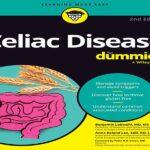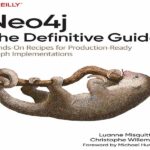- عنوان کتاب: Anesthesia for Oral and Maxillofacial Surgery
- نویسنده: Hong Jiang
- حوزه: بیهوشی
- سال انتشار: 2023
- تعداد صفحه: 334
- زبان اصلی: انگلیسی
- نوع فایل: pdf
- حجم فایل: 9.34 مگابایت
Published discussions about anesthesia for oral and maxillofacial surgery have been rare in recent years. However, dental anesthesia was an impor¬tant subject as the history of anesthesia was almost overlapped with the development of oral anesthesia. Therefore, in this chapter, the author will systematically introduce the history of anes¬thesia for oral and maxillofacial surgery.
The pain in the mouth and head has tortured human beings since their existence. That pain may be caused by tooth decay or surgery in oral and maxillofacial region. Before anesthesia tech¬niques were invented, it was common to pull out bad teeth without any form of analgesia or anes¬thesia, and avoiding the suffer of pulling teeth has been attempted all the time. For example, alco¬hol, hemp, poppy, henbane, and mandrake have been used to alleviate pain. However, with contemporary knowledge, we knew that all these chemicals or herbs were poisonous and could barely alleviate pain. As more scientific advances were achieved, techniques such as using cold, pressure, and hypnotism were embraced. Some of them have been used till today. Yet, these were not anesthesia and could never replace people’s demand for all kinds of anesthesia.
Anesthesia did not emerge until the mod¬ern medicine began to develop. The discovery of surgical anesthetics in the modern era was originally linked to inhaled anesthetics. By the end of the eighteenth century, a number of gases had been identified and could be produced relatively reliably. Scientist Joseph Priestley had identified nitrous oxide in 1773. Humphry Davy, his apprentice, was interested in that gas as well, yet he failed to publicize the beneficial quality of the gas.
By the mid-eighteenth century, as chemistry progressed, “modern” anesthesia dawned. The American dentist Horace Wells in 1844 noticed and suggested that volatile gases, such as nitrous oxide, could be inhaled and used for medical and dental anesthesia. He tested the effect himself and found that while extracting a tooth with the inhalation of nitrous oxide, he did not feel any pain. However, when he chose to dem¬onstrate the anesthetic efficacy of nitrous oxide, he failed. Later, William Thomas Green Morton learned from Wells and also Charles T. Jackson, a chemist and physician. After successfully anes¬thetized a pet dog by giving it ether, he found an opportunity to publicly demonstrate his findings on 16 October, 1846 by using ether anesthesia in the auditorium of the Massachusetts General Hospital to help Collins Warren, the chief sur¬geon, to remove a patient’s submaxillary gland tumors painlessly. It was a well-known and suc¬cessful demonstration. The term “anesthesia” was suggested by another Boston physician, Oliver Wendell Holmes, in a letter to Morton on 21 November, 1846. The name was adopted, announcing the beginning of anesthetic age.
Early anesthetics came into use in different areas. Whereas, early anesthesia was unpleasant and unpredictable for the patient. Early anesthe¬sia provided pain relief for the patient, but there were greater risks associated with dosage and treatment issues. A sponge was placed in a glass vessel, into which ether was dripped, and then held it to the patient’s face. The evaporation of the ether caused a decrease in the temperature of the glass and thus a risk of burning the skin.
این کتاب را میتوانید از لینک زیر بصورت رایگان دانلود کنید:





































نظرات کاربران